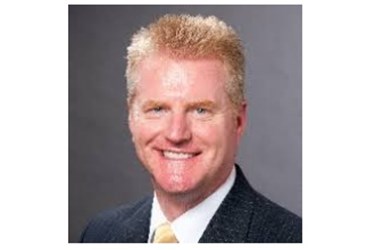The Times Are A Changin' In Drug Development R&D

By Rob Wright, Chief Editor, Life Science Leader
Follow Me On Twitter @RfwrightLSL

By Rob Wright
This year’s R&D Leadership Summit took place March 19 to 20 in Aventura, FL. Organized by The Conference Forum and sponsored by RPS, the focus was on driving innovation, change, and performance of drug development and discovery. The summit is by invitation only. Thus, I was delighted that Life Science Leader magazine was asked to attend for a second year in a row. Valerie Bowling, executive director for content and program management, created this c-level event with a goal of fostering an environment that not only inspires leaders, but provides support in advancing positive change to drug R&D. It seems to be working, as this year’s event had increased attendance over the previous year, with executives from academia, big pharma, biotechs, research foundations, and venture capitalists. So why did all these folks want to get together? Because as Bob Dylan once said, “The times – they are a changin’.
The Future Of Drug R&D Requires Transformation
Ken Getz, senior research fellow at Tufts CSDD, served as the summit’s chairperson and kicked the meeting off by having Peter Corr, Ph.D., cofounder and managing general manager with Celtic Therapeutics, conduct a presentation on future challenges, opportunities, and trends in drug development R&D. According to Corr, pharma needs to “dramatically transform” both internally and externally in order to be successful. With regard to internal, Corr is referring to a company’s internal R&D programs and believes companies need to transform culture, size, and incentives. Specifically, pharma needs to make R&D smaller, i.e. smaller budgets and smaller, more nimble teams. Further, he thinks in order to foster and innovative culture, there needs to be fewer layers, fewer review committees, and empowerment of scientific leaders — all the way down to the study site. To make the small R&D teams successful, he advises leaders to disconnect them from being viewed as profit and loss (P&L) centers while fashioning individualized incentive plans based on real value creation — not entitlement.
From an external transformation perspective, Corr bulleted a variety of suggestions on how this could be done, such as moving toward open innovation models. What made Corr’s talk so impactful was how it effectively set the stage for later presentations where pharma and bio executives outlined how their companies are innovating drug development R&D.
Transformation In Action
One of Corr’s suggestions for external transformation was to build collaborations with academic centers. Tony Coyle, Ph.D., VP and chief scientific officer for Pfizer’s center for therapeutic innovation (CTI), explained how his company is partnering with top academic institutions to provide funding for IND-enabling activities with a focus on discovery up to phase 1.
Lee Shorter, Ph.D., director disruptive technology seeker for GSK, conducted a spot-on presentation on Corr’s suggestion on moving R&D away from being focused on P&L. Shorter explained how the “seeker program” was created and piloted with zero ties to P&L and totally focused on the investigation of thinking differently. To make his point, he discussed how companies are striving to do more with less. According to Shorter, employees have a tremendous focus on daily deliverables, and as a result, if companies don’t create a structure to allow for innovative thinking, this activity tends to get pushed aside. Quite a conundrum when you consider that failure to innovate often results in company failure.
Raymond Bain, Ph.D, VP head of quantitative sciences; and Jerald Schindler, VP late development statistics with Merck, explained the company’s approach to using adaptive trial design. Simply by increasing the utilization of this technique from 25% of their studies to around 40% has resulted in saving over $200 million in just two years. Debbie Brooks, cofounder and executive vice chairman of the Michael J. Fox Foundation for Parkinson’s Research, explained how the organization is often thought of as being a patient advocacy organization, when in reality, it is focused on de-risking Parkinson’s drug development. I was surprised to learn that the foundation has funded over $285 million in research, with 87 cents of every dollar donated going directly to R&D activities.
There were a variety of other interesting presentations involving executives including Allergan, Altheos, Amag, CSL Behring, Eli Lilly, Millenium, Novartis, Rhythm, and Vertex. Space precludes me from being able to discuss all of them. Perhaps you should see about being invited next year so you can get the inside scoop. To inquire about possibly being invited, email The Conference Forum’s Valerie Bowling - vbowling@theconferenceforum.org.
